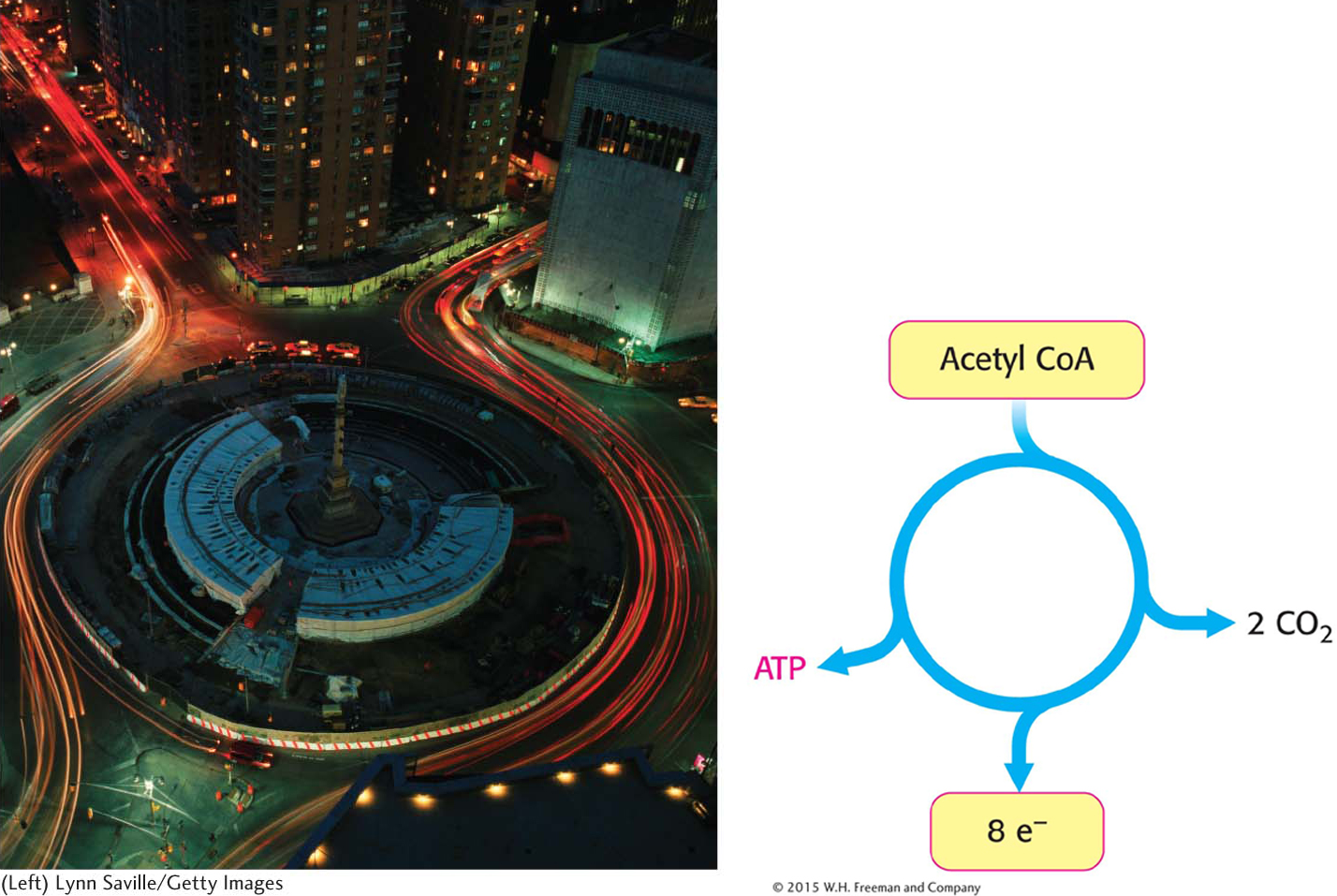
Harvesting Electrons from the Cycle


In Chapter 18, we learned how glucose is metabolized to acetyl CoA. This reaction, catalyzed by the pyruvate dehydrogenase complex, is the irreversible link between glycolysis and the citric acid cycle. Here, we will learn a common fate of acetyl CoA when oxygen is present and energy is required: the complete combustion of the acetyl group by the citric acid cycle.
What is the function of the citric acid cycle in transforming fuel molecules into ATP? Recall that fuel molecules are carbon compounds that are capable of being oxidized—
We begin with an examination of the cycle itself, noting that it consists of two parts: one part oxidizes carbon atoms to CO2 and the other regenerates oxaloacetate. We then see how this metabolic hub is regulated, and we end with an examination of the glyoxylate cycle, a cycle unique to plants and some microorganisms that uses reactions of the citric acid cycle.